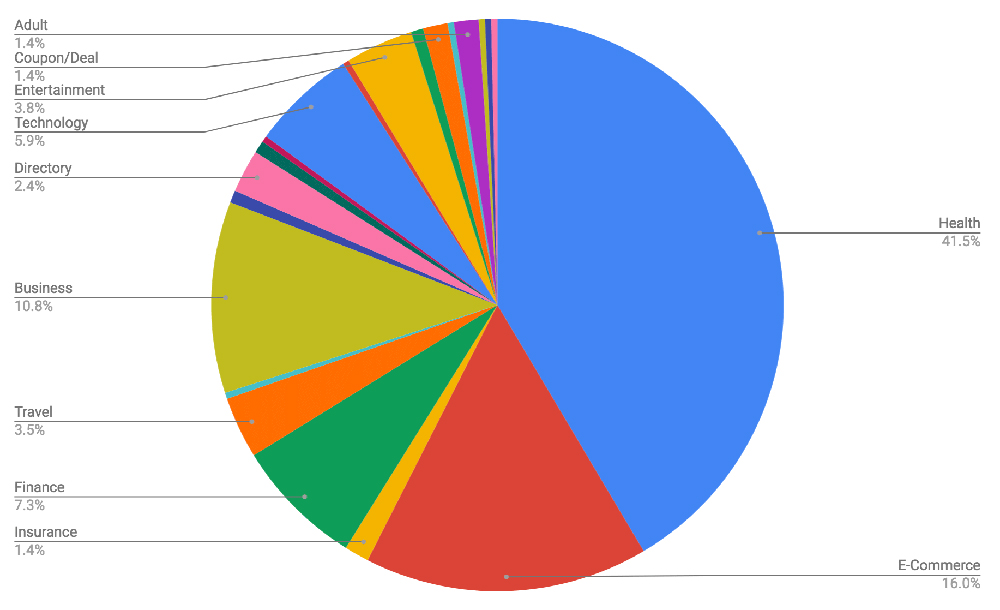1. Update keyword relevance
Keyword research boosts your organic visibility through SEO content optimisation. If you’ve never conducted keyword research on your content, you can make a start by answering the most searched for queries relating to your topic – this will improve your content’s reach.
Google Trends can give you an up-to-the-minute gauge on how popular your topic is right now – then you can tweak your content as necessary with relevant keywords.
Even if you did this initially, it’s probably time for a refresh.
I’d also advise rerunning your original keyword set through a tool such as Google Keyword Planner to ensure it’s still relevant. If not, time to update those target terms.
2. Improve credibility
A few adjustments to the credibility of your existing articles can go a long way. You can improve credibility by:
- Adding author bios that showcase your topic areas and skills
- Inserting quotes from experts around your business/topic
- Fact-checking to see if anything’s changed
- Updating data sources
Also, add published and refreshed date stamps where appropriate and include details of the person who reviewed the article – depending on the topic, this could be from a medical professional or someone in your compliance team.
For those in the health, ecommerce and financial services sectors, an audit of this kind isn’t a recommendation, but a necessity. Google’s quality guidelines emphasise the need for proof of expertise, authoritativeness, and trustworthiness for all so-called ‘your money, your life’ (YMYL) sites.

Breakdown of a website affected by E-A-T and considered YMYL pages from Search Engine Roundtable
3. Optimise for conversion
If your aim is to create content that converts your audience into customers, make sure to include one or two highly-targeted calls to action (CTA) at the end of your copy that takes your readers either to product-related content or to the product pages themselves. The CTAs should be super-relevant and shouldn’t be shoehorned in – this can look unnatural and deter the reader from continuing on.
Including CTAs makes your content actionable and moves readers further along the conversion funnel, closer towards a sale. Including them at the bottom allows readers to absorb the content, which may then influence their decision.
CTAs can be in the form of buttons or as anchor text. The anchor text should be placed naturally within the copy as opposed to it being shouty or salesy; however, keep it in line with your brand messaging.
4. Include internal links
Internal linking helps both your users and Google locate your valuable resources.
A popular and effective method is to link to relevant pages within the content and vice versa. However, as with CTAs, don’t overdo it.
Below is an example of what interlinking looks like from an article by Better about
If you’re not already, I would also advise introducing a carousel that links to related articles, guides and resources that are popular, new or in line with your goals towards the end of your content after the CTA(s).
IMAGE
5. Combine content to create complete guides
If your website has multiple pieces available on one wider theme, you could look at repurposing content into one resource. For example, if you have three blog posts on the importance of cybersecurity, cybersecurity threats and cybersecurity programming, you could collate these into one, in-depth guide.
Conversely, if you have one large piece of content, you can divide this into smaller pieces as we did with our outreach whitepaper, which was turned into six blog posts with internal links to the original piece.
As you’re consolidating or dividing, refresh the data to ensure all information within it is up to date.
To avoid issues surrounding cannibalisation and duplicate content, these complete guides can be turned into gated resources, videos or downloadable assets. Downloadable assets are great for email capture and lead generation. You can also promote these assets to your existing mailing lists and across your social channels.
6. Shout about audio and video
People will spend 100 minutes a day watching online videos in 2021, and 76% of marketers agree that incorporating video has resulted in website traffic growth. With this in mind, lots of brands have invested in video, podcasting and other multimedia to varying extents over the last few years to capitalise on this trend and you can, too.
If your main outlet channel is video content, you can repurpose them by taking the main topic and turning it into blog posts, webinars or guides. This can help attract new audiences via organic and social channels.
Do you have a bunch of old webinar recordings? Further their reach by uploading them to YouTube and embedding them on a relevant page with a synopsis. You could also edit the webinar and use snippets to promote some of that other relevant content you’ve just updated.
Recently, there’s a huge and growing appetite for podcasts; according to Ofcom, one in eight people in the UK now listen to podcasts weekly – an increase of 24% over the past year. If you’re keen to try this type of format but have little resource, take your top 12 performing pieces of content and record two team members discussing the key points within each one for 20 mins or so. That’s 3 months’ worth of content in no time at all!
7. Create a seasonal roundup
Collating roundup listicles at the end of a season or year is a great way to promote old content. According to BuzzSumo, the most engaging phrases contain numbers and many use a list format.

BuzzSumo also highlighted ‘10’ as the most socially engaged headline number followed by ‘5’, ‘15’ and ‘7’.
Going back to the example of cybersecurity, you could create a post titled ‘Top 10
And there you have it! I hope you found this guide helpful and see you some uplift from the tips. Let us know how you get on and if you use any other tricks please tell us in the comment section below.
If you’re struggling with where to start, get in touch and we can talk you through the content auditing process in more detail!
cybersecurity posts to read in 2020’ and link out to 10 popular pieces that have been written throughout the year. If possible, ask one of your in-house experts to collate and justify the list. Feature that expert prominently in the post to highlight their expertise and authority on the topic.
